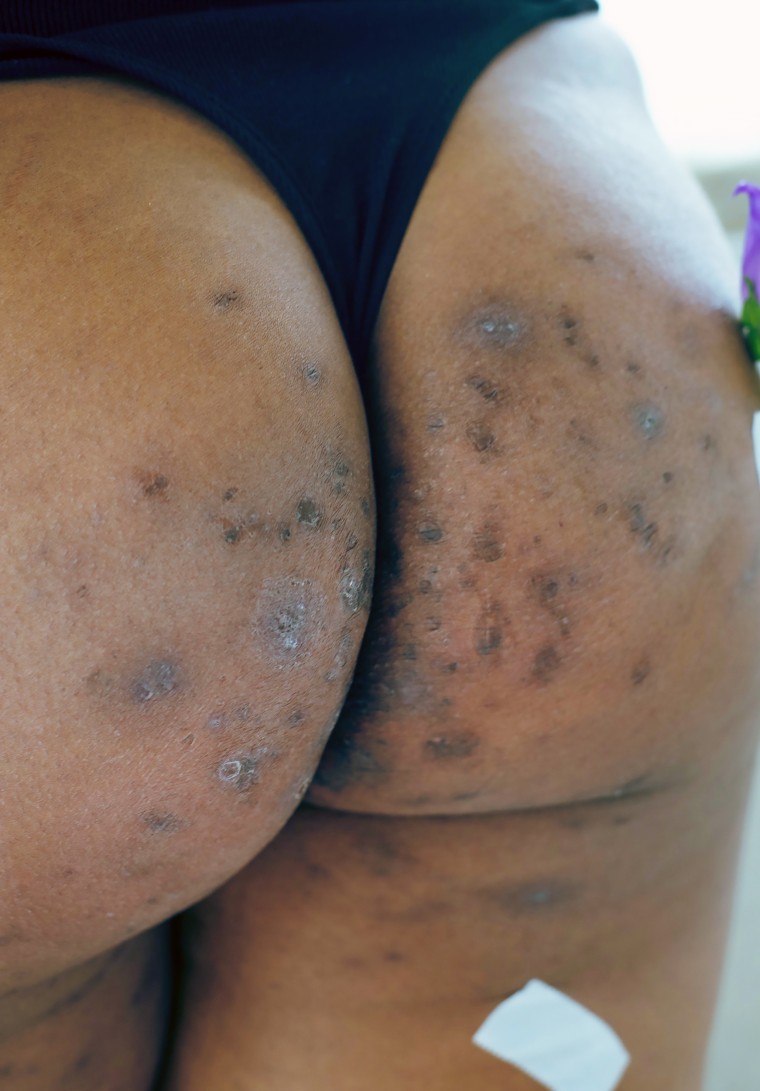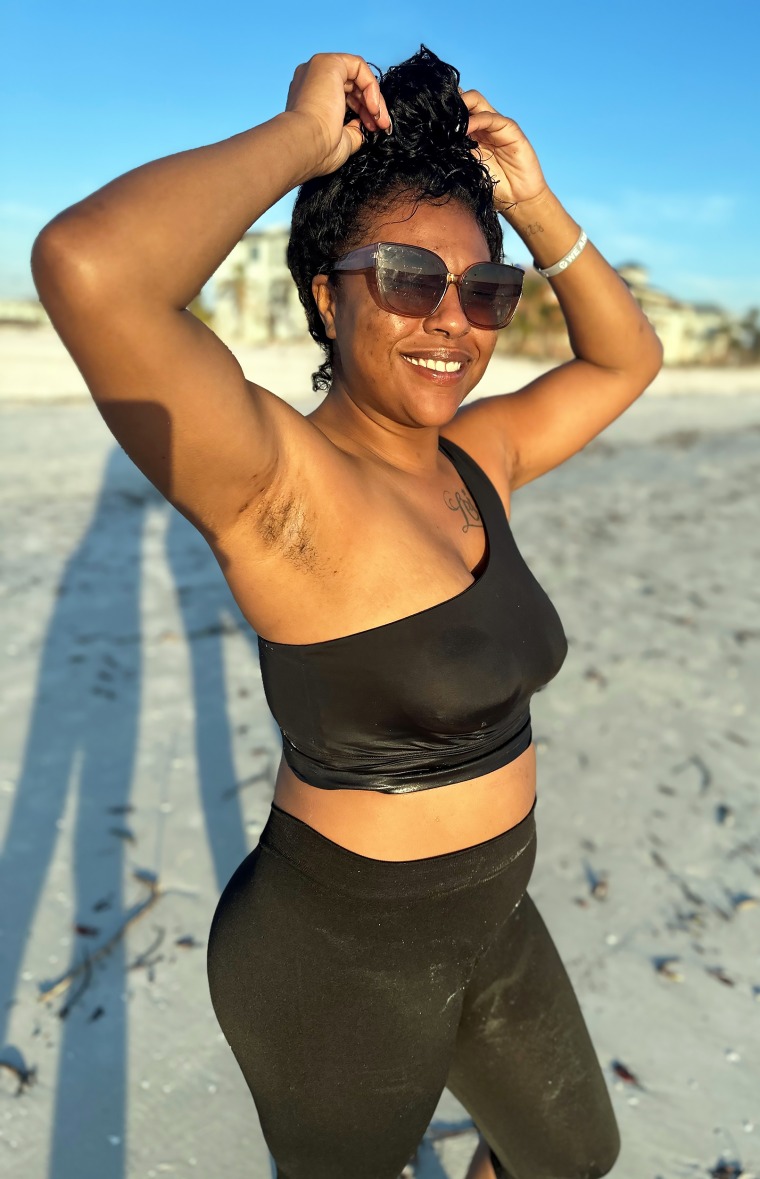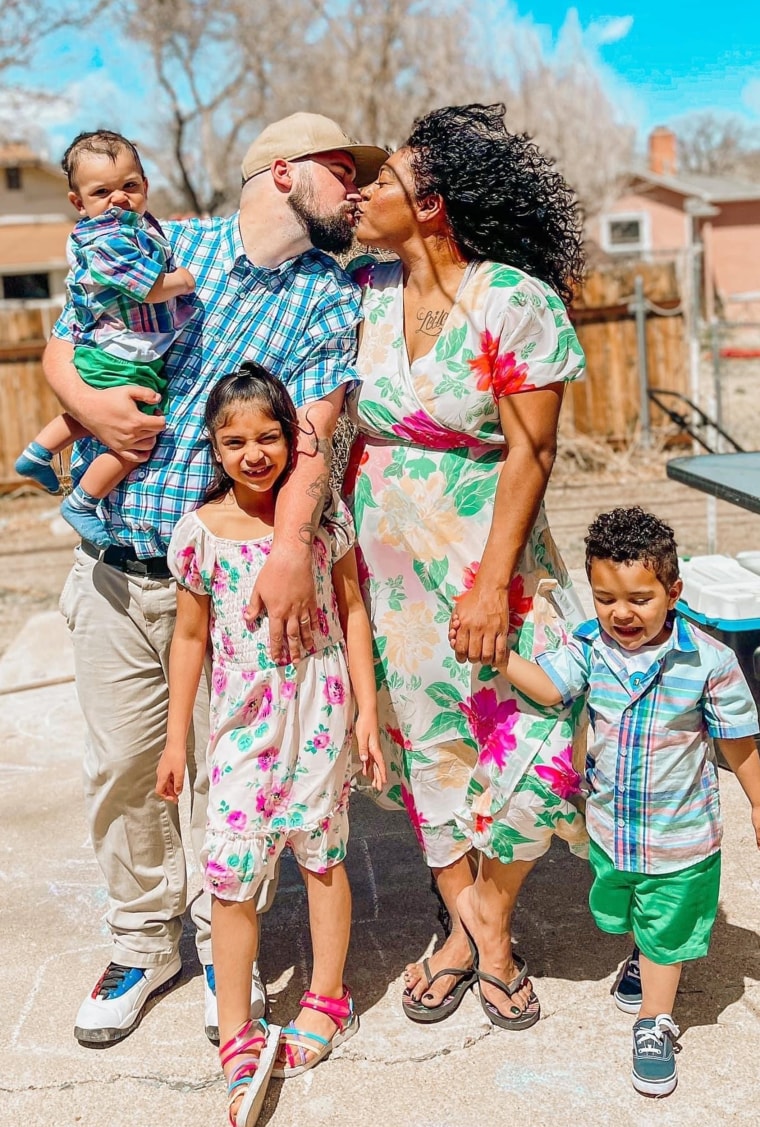Like many preteens, Cydney Carter’s body began changing during puberty. When she was 12, she observed unexpected changes — large bumps and bruises on her inner thighs.
“I remember thinking something was wrong with me,” the now 27-year-old from Colorado Springs, Colorado, tells TODAY.com. “Nobody was talking about it and my mom had no idea what exactly was going on.”
The splotches looked like blackheads but sometimes transformed into pus-filled abscesses. When they became too painful, Carter visited the emergency room where doctors would make an incision to drain them. After five years of not knowing why she developed the uncomfortable boil-like growths on her skin, a dermatologist discovered she had a rare skin condition called hidradenitis suppurativa (HS).
This is an inflammatory condition that causes pus-filled bumps to develop on the skin that leave scars behind, Dr. Jenny Hsiao, an associate professor at the Keck School of Medicine at the University of Southern California and director of clinical research at Keck in the dermatology department, tells TODAY.com.
Receiving a diagnosis felt “bittersweet” to Carter.
She was relieved to know the HS wasn't the result of something she'd done wrong. “But then again, it’s like ‘OK, this is HS, this is what you have. There’s no cure’ … that was discouraging.”
Painful bumps in sensitive places
When Carter began developing the bumps on her groin, she felt embarrassed and hid her body. In high school, when her volleyball team considered new uniforms, she advocated for long-sleeved shirts. She hoped to hide the cysts that had then begun growing under her arms because she felt ashamed of the dark, pus-filled lumps.

“You think you’re dirty or maybe you’re doing something to cause this,” she says. “I kept it a secret. All the sports I played I did my best keeping it to myself. Even in the dressing rooms, I was just really discrete.” While she worried about the appearance of her skin, the abscesses also caused intense pain.
“The ones that are the tiniest can actually cause the most pain,” Carter says. “It’s crazy to think how many days I went through with all the pain.”
When the bumps felt too sore, Carter visited the emergency room. Doctors often lanced and drained the bumps, believing they were treating something like a boil. She didn’t know at the time that lancing and draining the abscesses “is literally the worst thing you can do because it has a 100% recurrence rate.”
In high school, Carter took medical-focused classes. As part of a health academy program, she participated in an internship at a dermatologist’s office. At one point, she asked if the doctor could possibly help her with her mysterious skin condition. After her internship, Carter returned as a patient and received a diagnosis of hidradenitis suppurativa when she was 17. While it felt comforting to know the reason for her abscesses, little else changed at first because of how little is known about the condition.
“I would have to go to the emergency room and I’m educating my doctor on what HS is,” she says. “If you feel like you always have to be educating the professionals … that can be really discouraging.”
At the time, Carter also had few treatment options to help her manage the HS. While there’s pain with HS, Carter also experienced trauma from having the condition because “keeping (it) a secret that is where the mental burden comes in.”
Hidradenitis suppurativa
Hidradenitis suppurative is a “chronic inflammatory skin condition,” says Hsiao. It impacts women and Black people more often, though it can occur in anyone, she notes. HS is considered rare and there’s a general lack of awareness of it, which leads to delayed diagnosis.
“The average time somebody with HS waits to get the diagnosis is 10 years, and it’s really just way too long,” Hsiao says. “You can imagine an adolescent going into high school and having these painful bumps in their armpits or their groin. And it’s hard to raise their hand in class. It’s hard to participate in PE.”

Hsiao says there’s no blood or skin test to diagnose HS and determining if one has it is based on whether they meet three criteria:
- Painful skin nodules or abscesses
- Bumps that grow in skin fold areas, such as in the armpit, under the breast and in the groin
- History of recurrence
“It’s not one time getting a boil somewhere on the body and it gets treated, and it never occurs again,” Hsiao says. “There’s that strong (likelihood) of reoccurrence.”
Experts remain uncertain as why people develop HS, but understand that it’s a “chronic inflammatory condition” with other mechanisms contributing to it.
“We know that there’s also hormonal factors involved. So, for example, a lot of women may say that their HS gets worse when they’re on their periods,” Hsiao says. “There’s also potentially microbiome factors and there’s genetic signals. So, it’s still being worked on.”
While HS might look like a case of bad acne, Hsiao notes that the conditions differ in many aspects including where it forms. Acne “typically occurs on the face or the upper chest or the upper back,” whereas HS blooms in skin folds and this appears to increase its severity in some people.
“Friction (seems) to make symptoms worse,” Hsiao says. “The reason why it predominates in this area is still unclear.”
There are medications available that can help decrease the severity of HS in patients and sometimes doctors prescribe antibiotics or topical treatments for short-term management, Hsiao says. Biologic medications — meds derived from living cells — “target specific parts of that over inflammation pathway to help decrease inflammation and therefore decrease the number of HS lesions, decrease pain,” explains Hsaio, who is also on the board of the HS Foundation.
She believes there needs to be more awareness of HS to help lessen the delay in diagnosis and offer treatment sooner.
“There’s been this enormous push in recent years to get education out there to primary care providers or emergency medicine, urgent care, for surgeons or OB-GYNs,” she says, “so that providers can help make that diagnosis.”
Hsiao also hopes to increase awareness of HS to decrease the stigma and shame people with it experience.

“HS is not an infection and it’s not contagious and absolutely it’s not the patient’s fault,” she says. “Taking away that isolation and the loneliness that can come with having the condition by connecting (them) with the community and knowing that there are treatment options out there is really helpful.”
Advocacy
Carter is pregnant with her fourth child. Luckily, her HS was “really calm” during this pregnancy, though a new HS lesion might make breastfeeding tough.
“(I) had one or two flares that were pretty painful and excruciating but thankfully I have good treatment options,” she says. “I did develop HS on my breast (during) this pregnancy with one or two flares, one right on the nipple and one underneath my breast, which is the more common area to get HS on. For a second, I was heavily questioning if I was going to be able to breastfeed.”
While grappling with this thought felt tough, she soon realized that not being able to breastfeed because of HS doesn’t make her “any less of a mother,” and adds, “I don’t want to put myself in too much pain.”
After more than a decade of trying to hide her HS, Carter decided to share her experience with it on social media starting three years ago.
“The most powerful part of this experience — and it’s my favorite part — is to connect with other people,” she says. “We didn’t talk about it for so long so when you get with somebody else who has HS … we are just swapping stories.”
Like Hsiao, Carter hopes to raise awareness of HS, especially in emergency rooms to avoid misdiagnosis.
“The medical community as a whole needs to have a deeper understanding of what injustices and what (HS) patients deal with on a daily basis,” she says.
Carter hopes that when people hear about her experience with HS, they realize they are not alone. She's also shared her story as part of campaign aimed at raising awareness of HS called Make HStory sponsored by UCB, which provides resources and support to people living with HS.

“If we can prevent people from feeling (badly) about themselves, giving them the freedom, knowing that it’s not their fault, sharing that truth I think we’re going to help a lot of people mentally,” Carter says.
